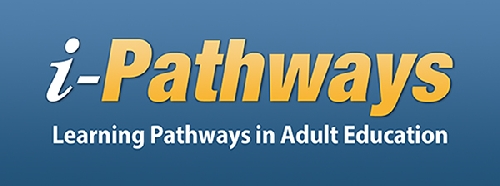University News
WIU's CAIT Offers Correctional GED Preparation Curriculum
July 8, 2016
MACOMB, IL – The Center for the Application of Information Technologies (CAIT) at Western Illinois University is working on a national project that has never before been attempted in the United States. The center is successfully providing correctional facilities with an internet-based high school equivalency program, known as i-Pathways, for inmates to use while incarcerated.
According to Brandon John, project manager for the i-Pathways Oasis project, the inspiration for the idea came from "Raspberry Pi," a credit-card sized computer that plugs into a monitor or TV and works just as a desktop would, allowing the user to browse the internet and play videos. Using this type of technology would enable CAIT to reach additional facilities.
CAIT took this idea and remodeled it to fit the no-internet policy of most correctional facilities and county jails. They have designed a tech-driven, cost effective OASIS box that provides inmates with the i-Pathways program, but does not allow internet access.
CAIT has had a lot of requests for a program with no internet. Kathy Olesen-Tracey, i-Pathways curriculum director, said, "This is a scalable economic solution that responds to field needs."
Most of the i-Pathways Oasis team is made up of Western Illinois University alumni. Even after graduating, Western alumni are still working toward making WIU recognizable around the world for its endless possibilities. The following are the alumni, what position they hold in the project and the year they graduated:
• Richard Chamberlain, director, 1981 (philosophy) and 1997 (master's in instructional technology and communication)
• Kathy Olesen Tracey, curriculum director, 1997 (Board of Trustees Bachelor of Arts), 2003 (master's in education and interdisciplinary studies) and 2010 (master's in educational administration)
• Paul Sweet, associate director, 1997 (art) and 2009 (master's in instructional design and technology)
• Brandon John, Oasis project manager, 2000 (communication) and 2011 (master's in history)
• Brice Shake, art director, 1995 (art)
• Margaret Taylor, accounts payable, 1999 (accounting) and 2006 (master's in business administration)
• Matt Baker, web design, 2007 (Board of Trustees Bachelor of Arts)
• Brad Wagoner, i-Pathways application developer, 2009 (computer science, law enforcement and justice administration)
• Chance Yeoman, i-Pathways application developer, 2005 (computer science) and 2006 (master's in computer science)
• Russel Glaue, enterprise technology engineer, 2000 (music and art) and 2012 (master's in computer science)
• Irving Kwong, i-Pathways help-desk, 1998 (communication sciences and disorders) and 2000 (master's in communication sciences and disorders)
Aside from alumni, Illinois State Representative Norine Hammond is also supportive of the i-Pathways program.
"I am truly proud of the fact it came about as a collaboration of Western Illinois University and the Illinois Community College Board," said Hammond. "I was able to witness the program being used first hand when I was invited to the McDonough County Jail. The program gives a new lease on life by providing purpose and direction. It was very heartening to see."
The i-Pathways program has been in operation since 2001 and covers four different subjects: language arts (reading and writing), math, social studies and science. The program is designed with a sixth through 12th grade readability, which ensures it can be used by a wide range of people.
John said it has been proven that if an education can be provided to those who are incarcerated, they will have less of a chance of going back to jail. By providing inmates with access to i-Pathways, there is a higher chance they will improve their employment options or continue to pursue their GED (General Educational Development) after release.
McDonough County, Knox County and Livingston County jails currently use the i-Pathways Oasis project. All facilities that are part of the Illinois Department of Corrections currently use i-Pathways in their adult education classrooms. Overall, using the program is completely voluntary among inmates, but it is possible that usage of the program could be a required part of a jail sentence in the future. When i-Pathways was installed in the Knox County Jail, approximately 10 inmates volunteered to try the program.
The inmates in the McDonough County jail are using their commissary money to pay for the high school equivalency test after completing the i-Pathways program. This means taxpayers will be saving money because the inmates are paying for the test themselves.
"It is an excellent program for county jails," said McDonough County Sheriff Rick VanBrooker. "The self-contained instruction allows inmates to earn a GED, while maintaining a secure jail."
All correctional facilities are different sizes and have different needs. Taking this into consideration, CAIT, as a non-profit organization, has made the program scalable so each facility can get the license that suits its needs, and still be able to use i-Pathways Oasis.
The i-Pathways Oasis program is used in many environments outside of jails, including adult education programs, libraries, K-12 schools, military bases, Native American organizations and homeschooling. It is used in multiple states across the U.S. as well as statewide in Illinois, Nebraska, Maryland and Minnesota. CAIT is currently working with potential users in United States military bases across Asia.
Building on the national success of the i-Pathways brand, CAIT is focused on providing affordable, sustainable and meaningful instruction to county jail educational programs.
"It is important that we provide education to those who are incarcerated because it will provide us with tangible outcomes. Educating inmates will make them more employable and more civic minded. It will also lead to taxpayer money being more wisely spent because there will be a lower number of people returning to jail," said Olesen Tracey.
"Sooner or later, these inmates are going to be our neighbors and their kids will be going to school with our kids. It makes sense to provide them with the education they need in order to succeed and positively impact our community," said Tracey. "The cutting edge technology that CAIT offers with the i-Pathways Oasis program will provide inmates with the education they need to (re) enter the work place."
For more information about the i-Pathways program, visit i-pathways.org or cait.org.
Posted By: Katie Hopping (WIUNews@wiu.edu)
Office of University Communications & Marketing



Connect with us: